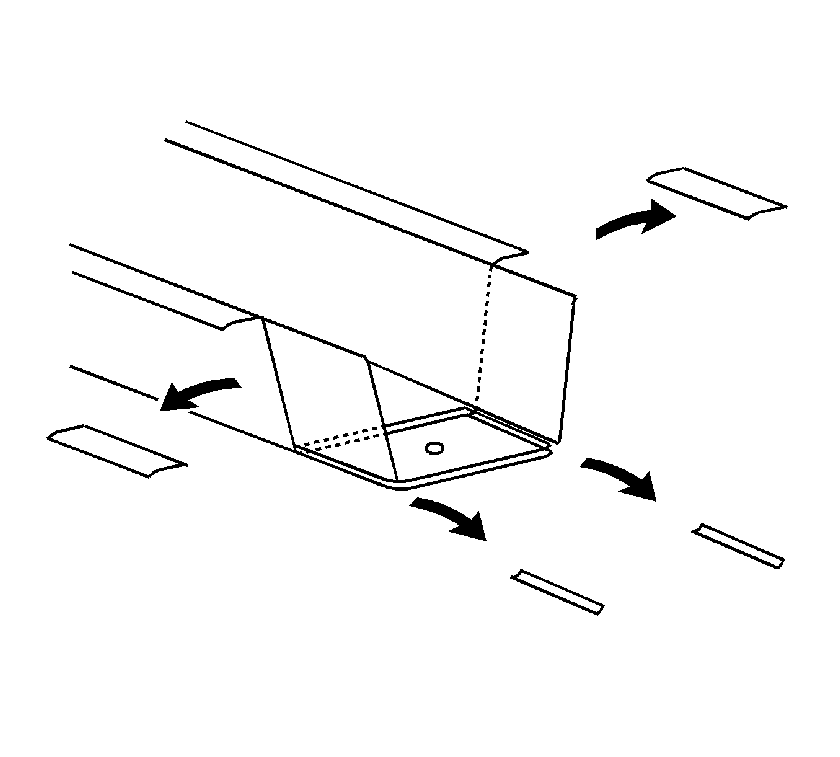For 1990-2009 cars only
Removal Procedure
- Disable the SIR system. Refer to SIR Disabling and Enabling in SIR.
- Disconnect the negative battery cable. Refer to Battery Negative Cable Disconnection and Connection in Engine Electrical.
- Remove all of the related panels and the components.
- Remove the sealers and anti-corrosion materials from the repair area, as necessary. Refer to Anti-Corrosion Treatment and Repair in Paint and Coatings.
- Repair as much of the damage as possible. Refer to Dimensions - Body .
- Locate the die mark on the outer lower surface of the rear rail, rearward of the #5 bar.
- Align a sliding square or similar tool to the line at the tip of the arrow in the die mark. Scribe a line across the rail.
- Use the same tool to transfer this scribed line onto the sides and the weld flanges of the rail.
- Cut at the marked location.
- Remove the damaged component from the vehicle.
- Drill 2 8 mm (5/16 in) plug weld holes on each of the 3 sides of the rear rail. Position the center of the holes 10 mm (3/8 in) from the cut edge.
Caution: Refer to Approved Equipment for Collision Repair Caution in the Preface section.
Caution: Sectioning should be performed only in the recommended areas. Failure to do so may compromise the structural integrity of the vehicle and cause personal injury if the vehicle is in a collision.
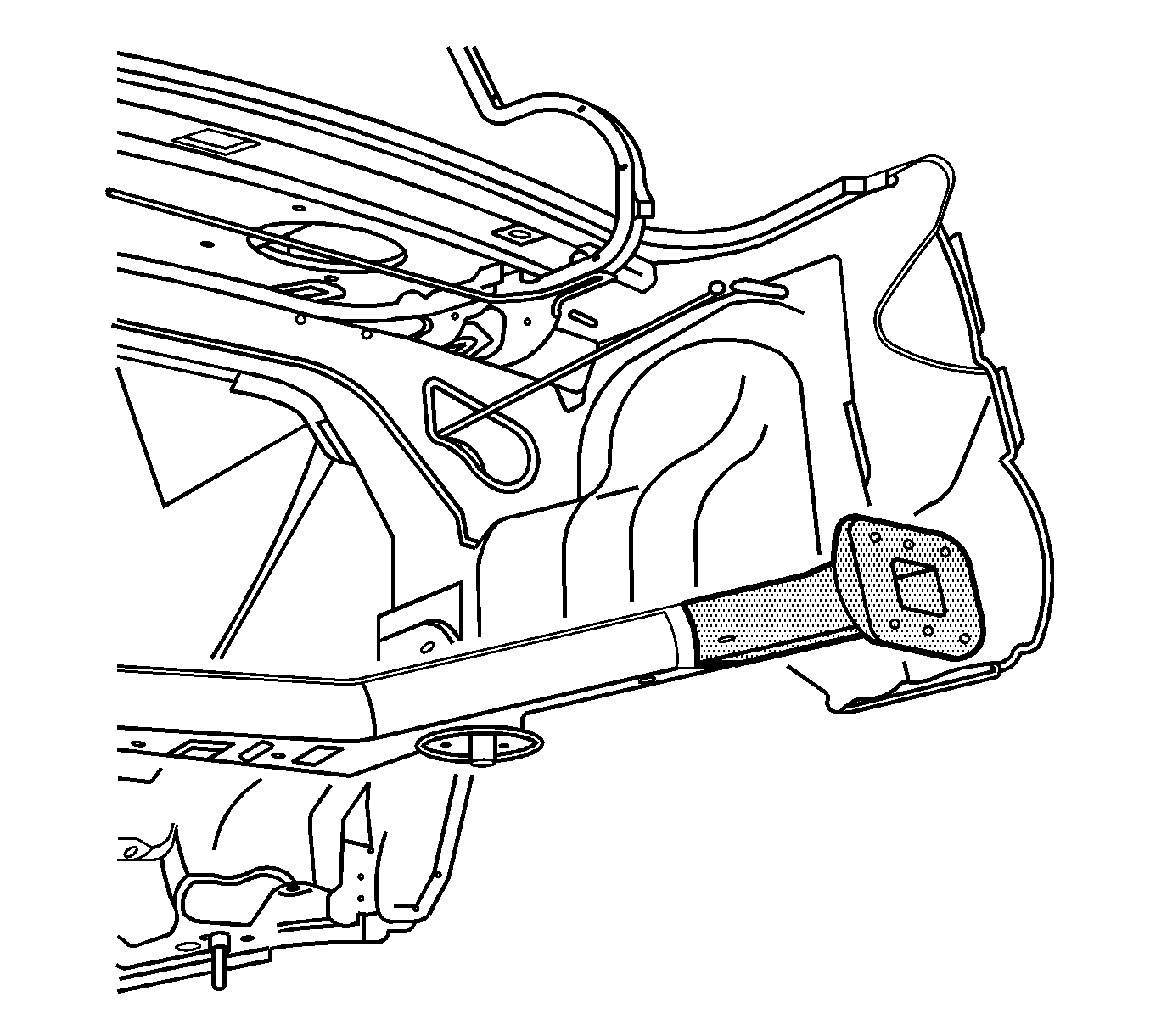
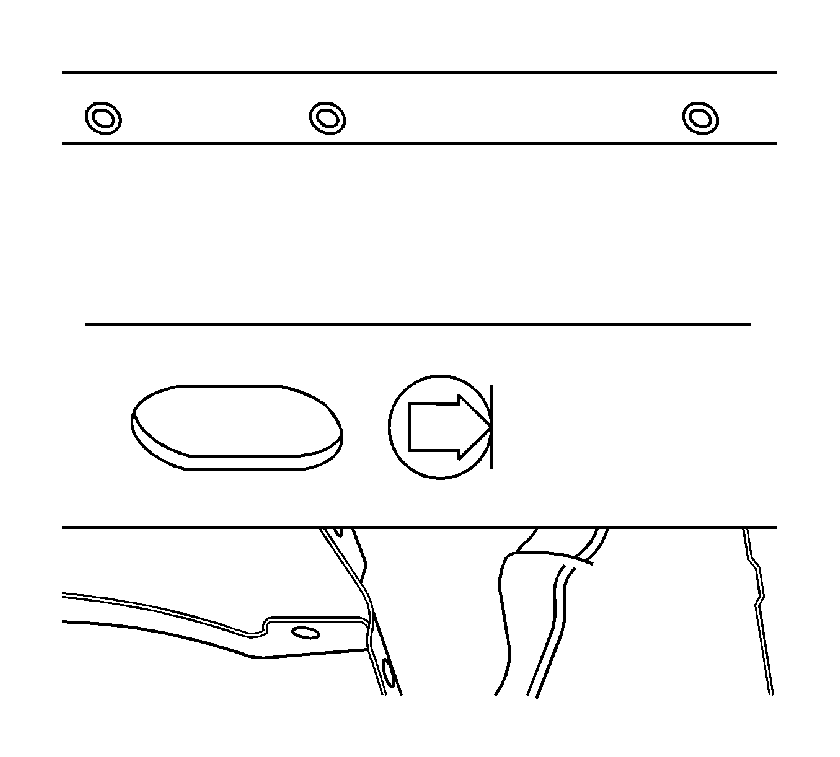
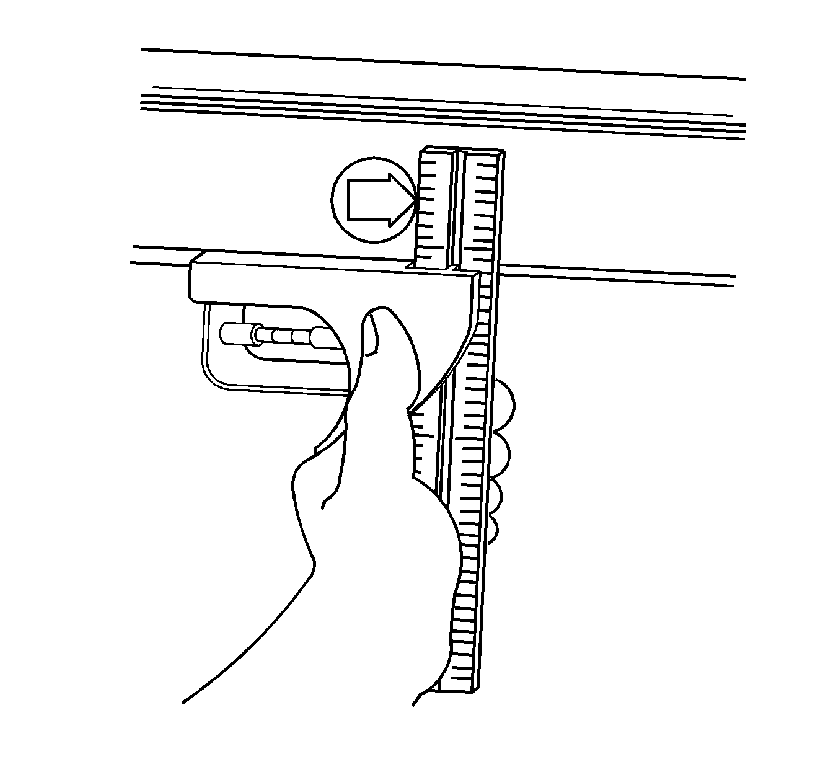
Important: Do not section the rail in any area other than the die mark location given.
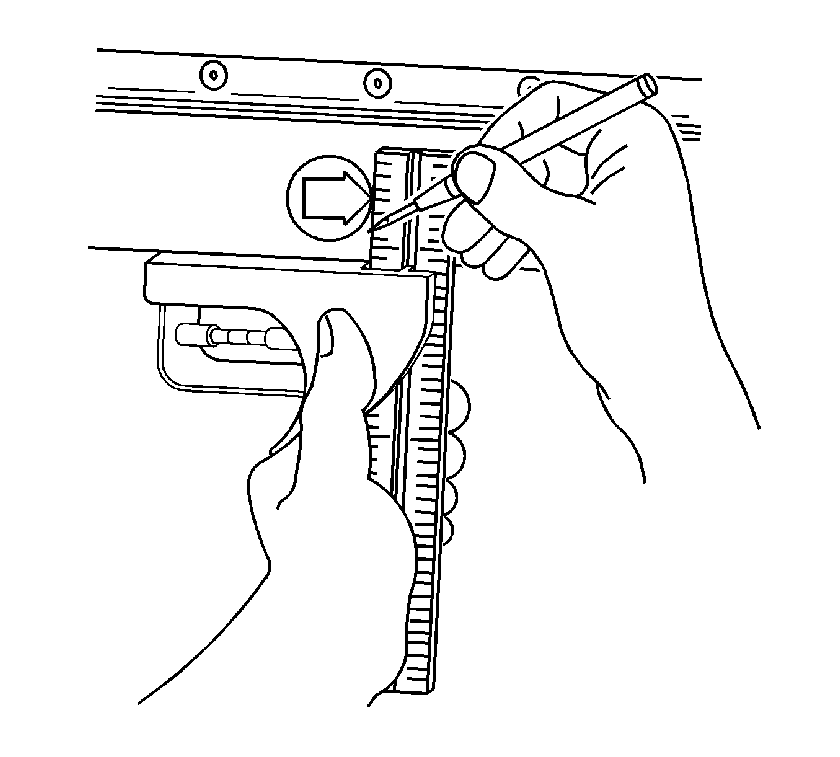
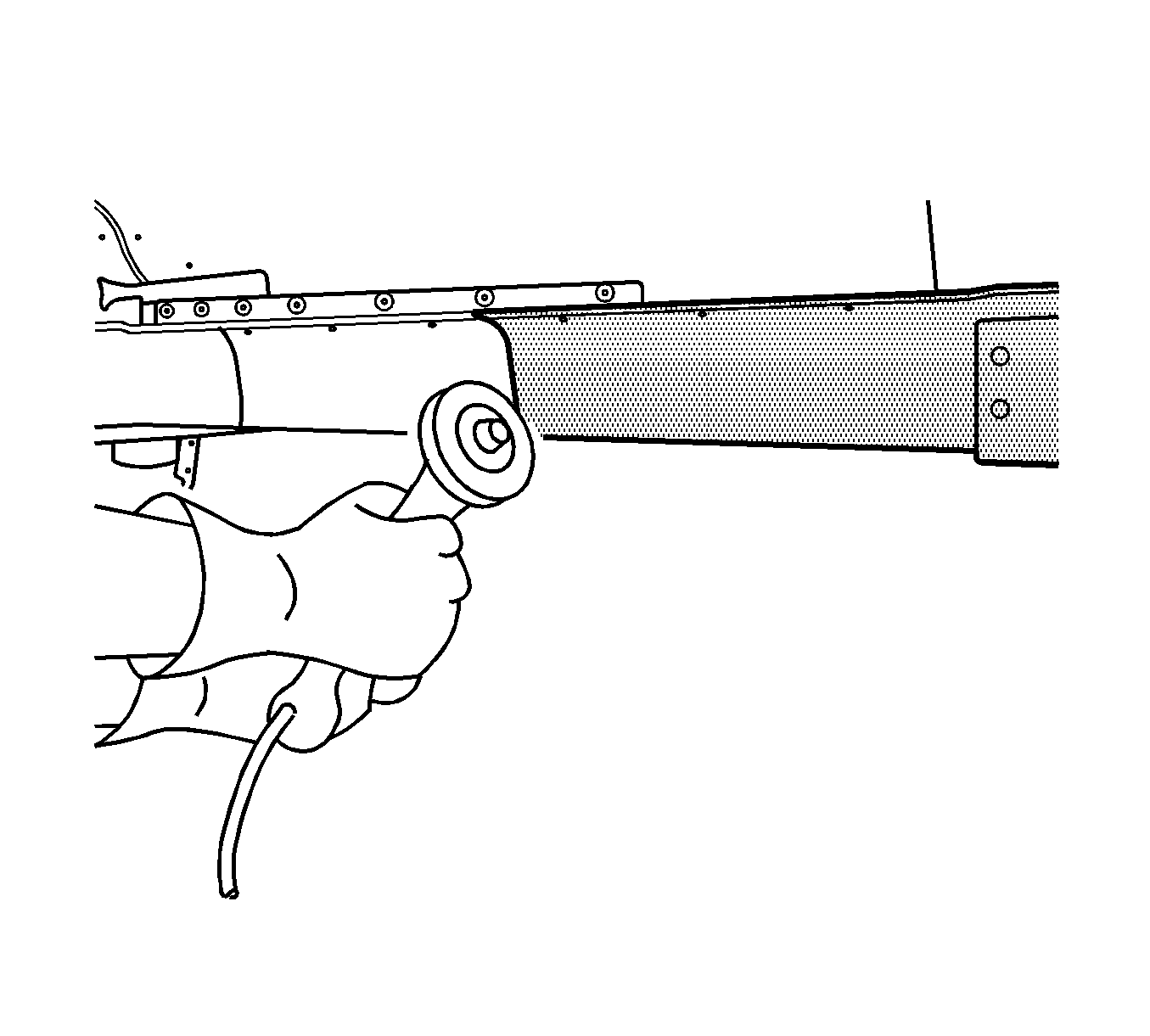
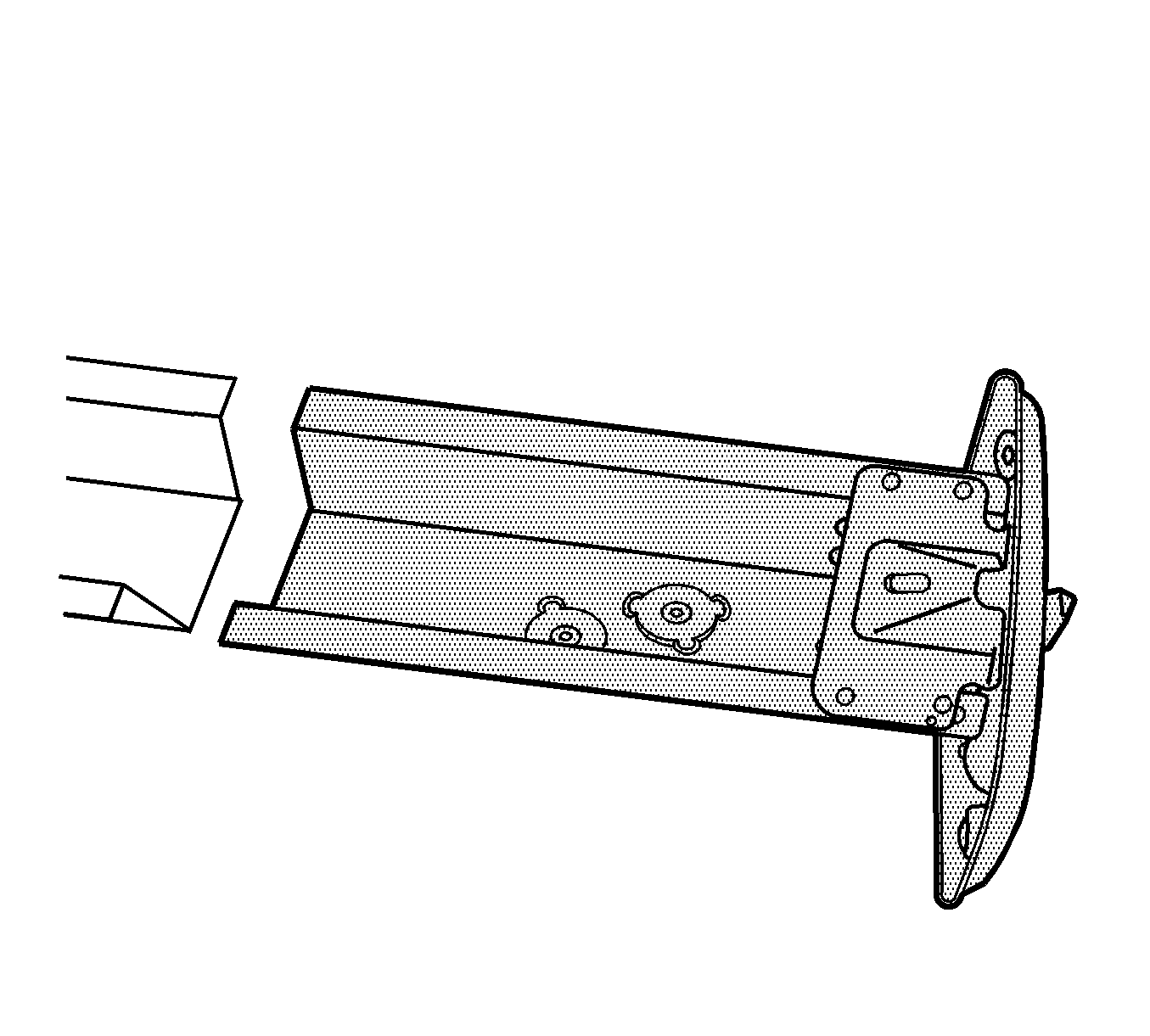
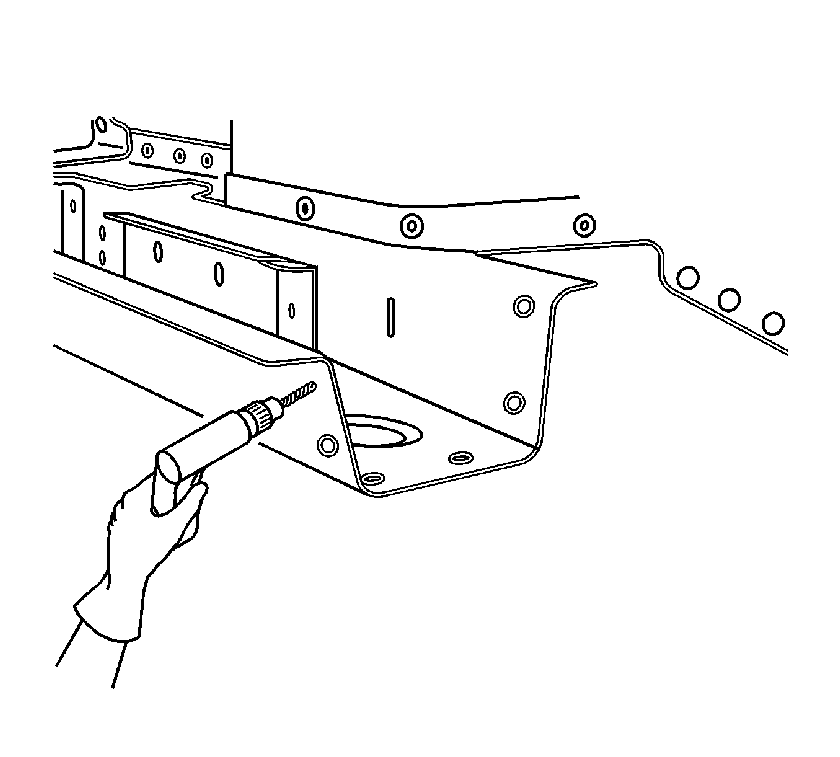
Installation Procedure
- Locate the die marks on the service part rear rail.
- Align a sliding square or similar tool to the line at the tip of the arrow in the die mark and scribe a line across the rail.
- Use the same tool to transfer this scribed line onto the sides and the weld flanges of the rail.
- Place a mark forward, towards the rear of the arrow, 25 mm (1 in) from the scribed line on all 3 sides of the service rail.
- Use the tool to scribe a line on all 3 sides and weld flanges of the rail.
- Cut at the scribe line at the rear of the arrow.
- Remove the rear portion of the rail.
- Cut the upper outer flanges of the rear portion of the rear rail service part. Cut the flanges back to the first scribe line and remove the tabs.
- Cut the lower radius corners of the service part back to the first scribe line and remove the small corners.
- Bend the bottom side of the service part at the sectioning location inward slightly by aligning a vice grip flanging tool or similar tool at the first scribed line.
- Prepare the sectioning area of the rear rail for welding.
- Apply 3M® Weld-Thru coating P/N 05916 or equivalent to all mating surfaces.
- Position the rear rail section using 3-dimensional measuring equipment. Clamp the rail section in place.
- Tack weld the part into position.
- Inspect the service rear rail for proper dimensions, using 3-dimensional measuring equipment.
- Plug weld at each 8 mm plug weld hole location.
- Stitch weld along the entire sectioning joint. Make welds along the seam with 25 mm (1 in) gaps between. Weld the gaps.
- Clean and prepare the welded surfaces.
- Install all of the related panels and components.
- Apply the sealers and anti-corrosion materials to the repair area, as necessary. Refer to Anti-Corrosion Treatment and Repair in Paint and Coatings.
- Paint the repaired area. Refer to Anti-Corrosion Treatment and Repair in Paint and Coatings.
- Enable the SIR system. Refer to SIR Disabling and Enabling in SIR.
- Connect the negative battery cable. Refer to Battery Negative Cable Disconnection and Connection in Engine Electrical.



